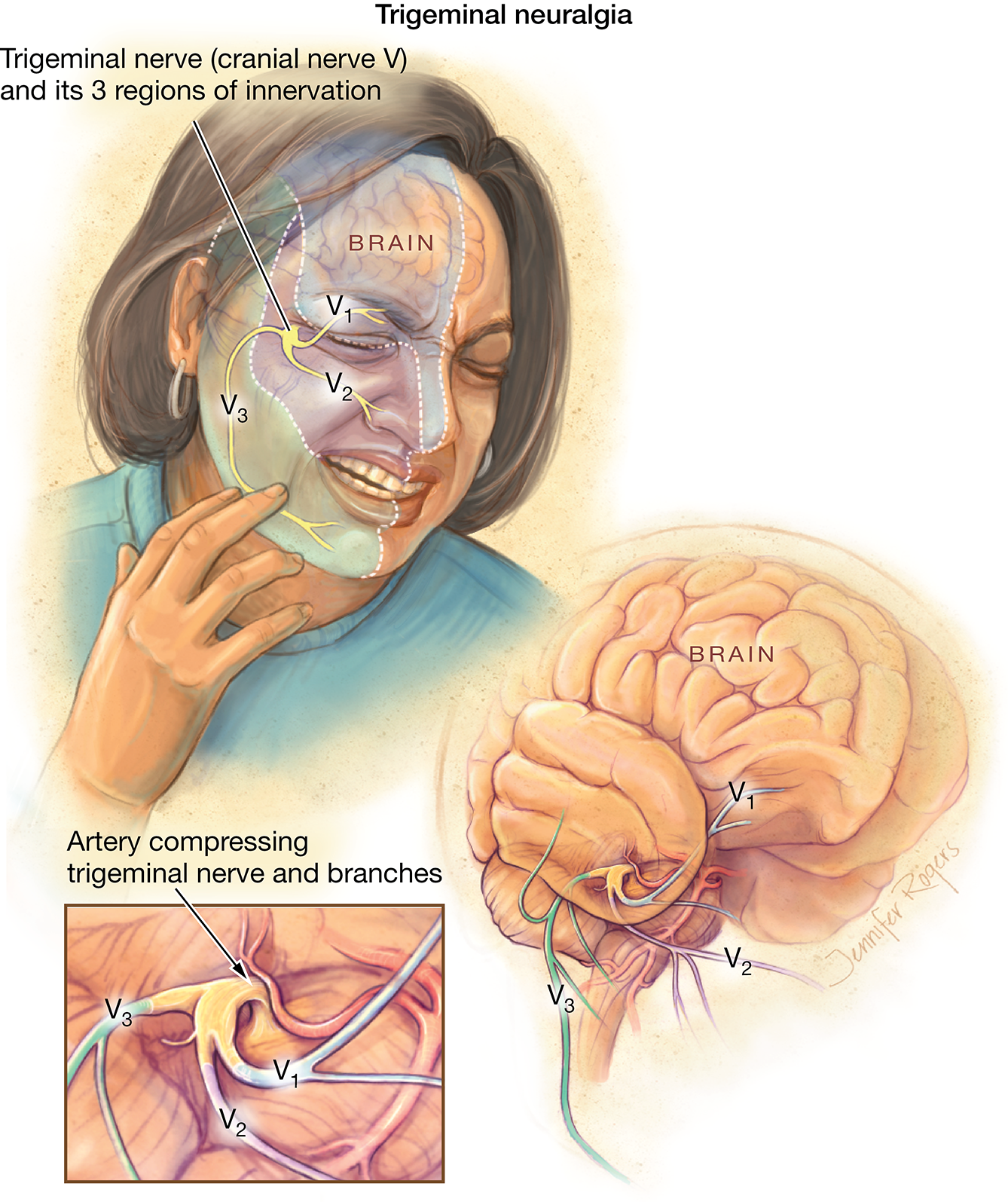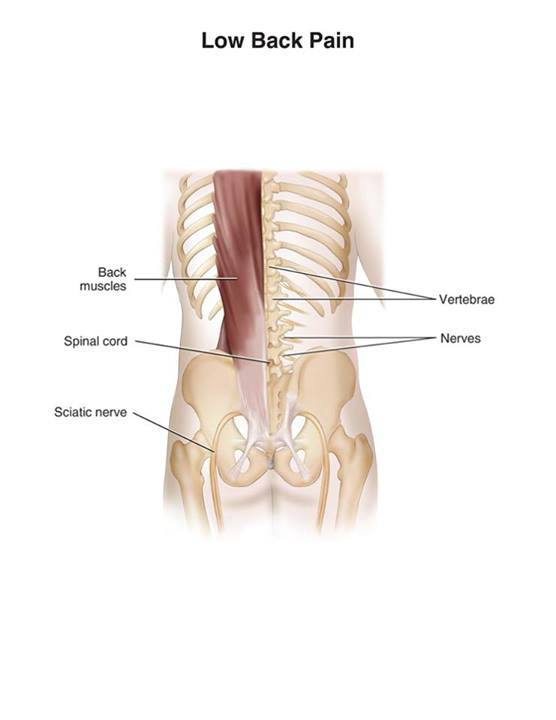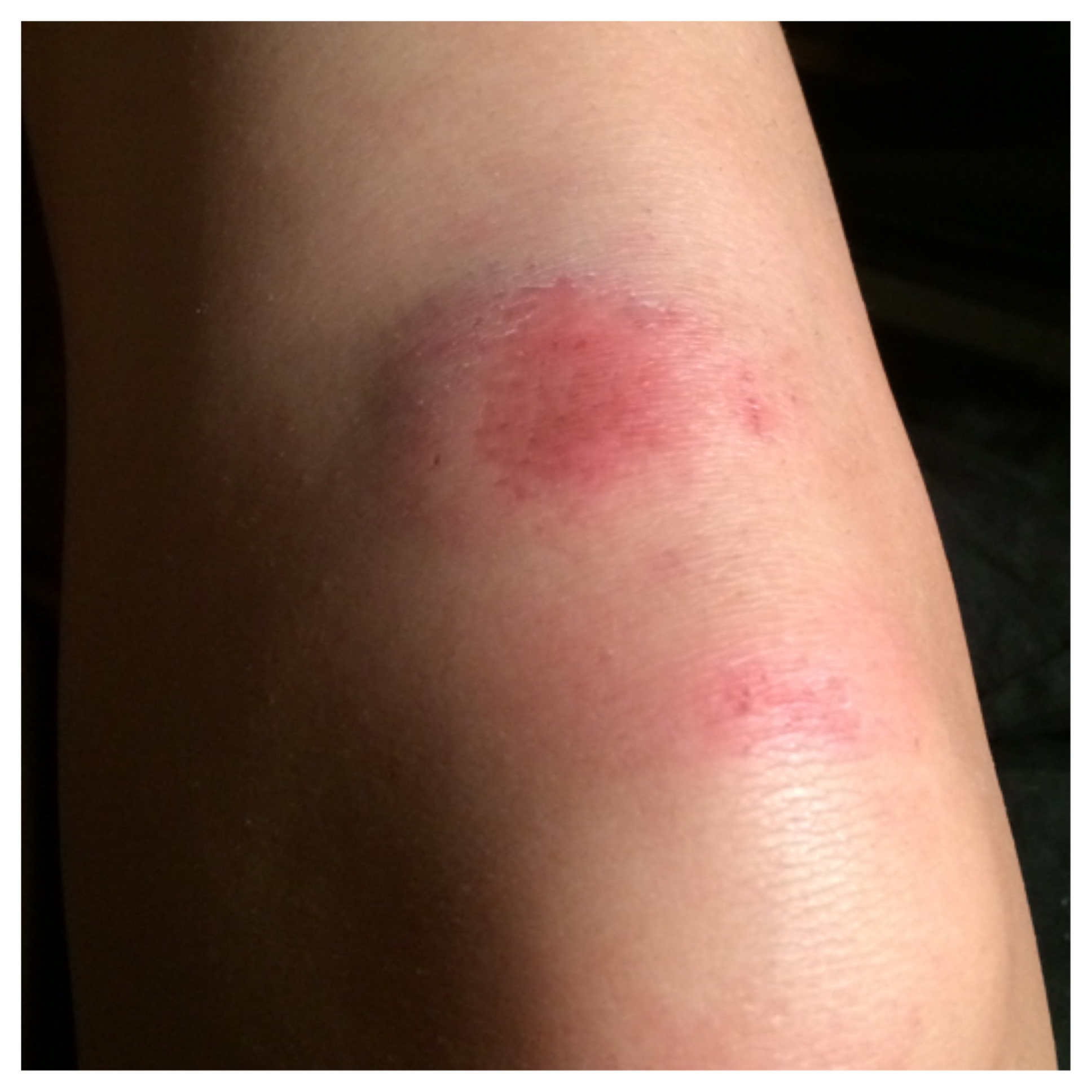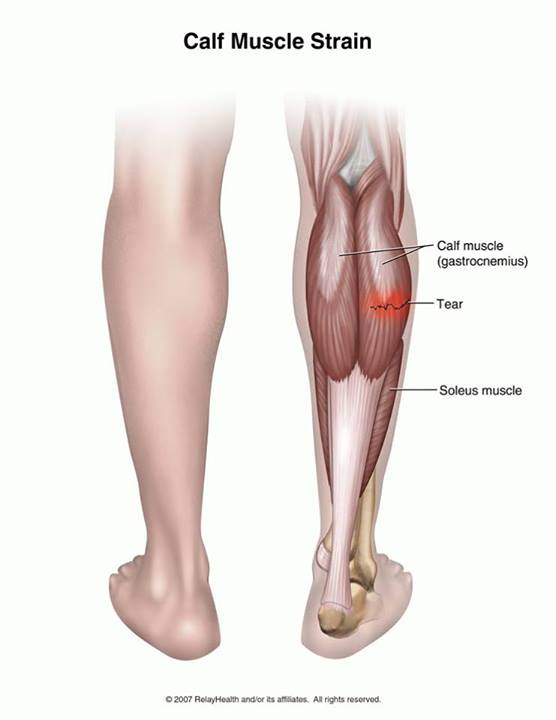GLUTEUS MEDIUS
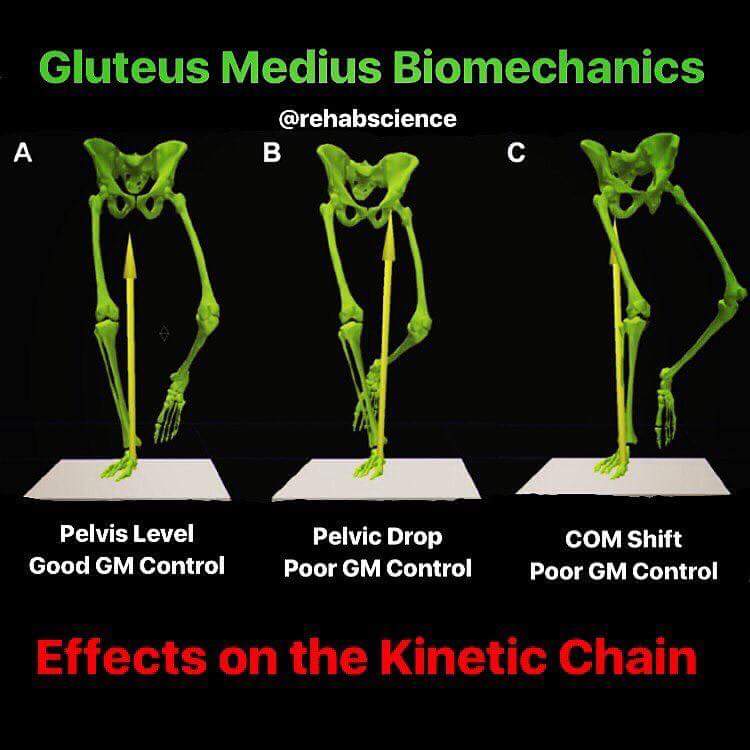
⬇️ Pathomechanics ⬇️
Gluteus medius (GMed) is an important abductor of the hip and stabilizer of the lower quarter, especially in single-limb stance. In this image, we can observe how poor GMed control and/or strength can affect positioning of the trunk, pelvis and leg and predispose an individual to various clinical problems.
? (A) – Here we see alignment associated with normal GMed function. The trunk is vertical, pelvis is level and the ground reaction force (GRF) vector (yellow arrow) passes to the inside of the knee.
? (B) – In this image, a Trendelenburg sign is noted as the opposite side of the pelvis drops and the trunk leans away from the stance limb due to inability of GMed to maintain normal pelvis orientation. This position moves the GRF vector even more medial of the knee, which applies increased tensile stress to the IT band and increased compressive load to the medial compartment of the knee joint.
?(C) – Lastly, we have the ‘compensated’ Trendelenburg sign where the opposite side of the pelvis is lifted and the trunk leans over the stance limb in an effort to reduce demand on GMed. This scenario causes the GRF vector to move lateral of the knee joint (valgus moment) and is associated with ACL injuries and patellofemoral (kneecap) pain.
Besides the knee conditions mentioned here, other studies have noted increased rates of trochanteric bursitis of the hip and low back pain when GMed control is impaired.
••••••••••
?Powers CM. The influence of abnormal hip mechanics on knee injury: a biomechanical perspective. J Orthop Sports Phys Ther. 2010.
.
?Cooper NA et al. Prevalence of gluteus medius weakness in people with chronic low back pain compared to healthy controls. Eur Spine J. 2016.

